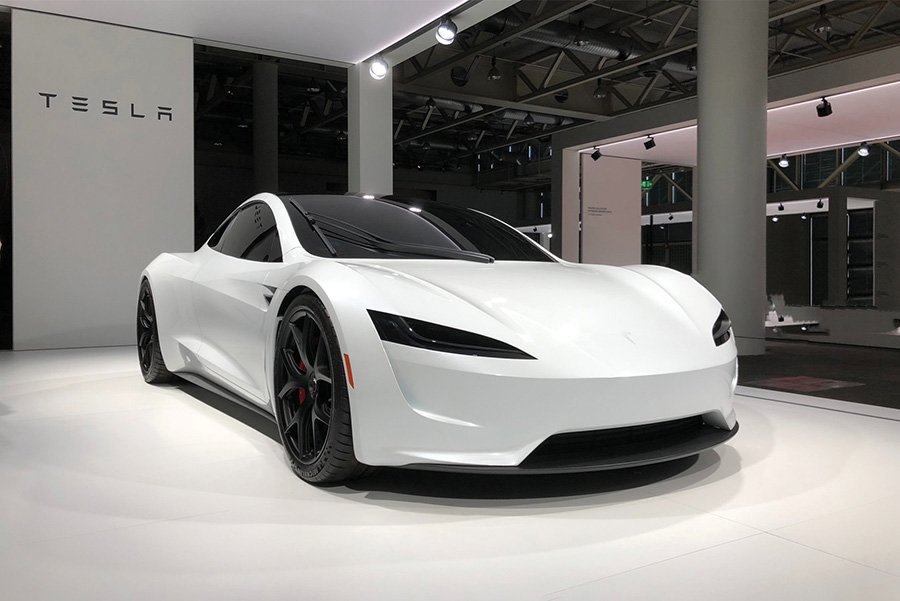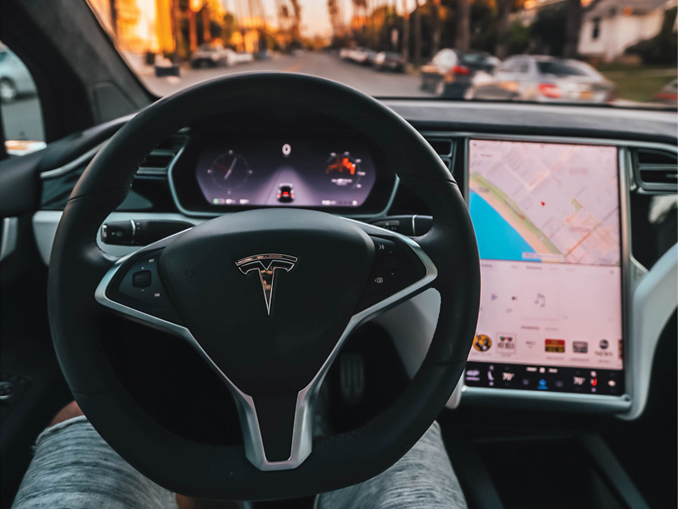 By Tom Neveril, President, Storybrand Consulting, Los Angeles, California, tom@storybrandconsulting.com, @tomneveril
By Tom Neveril, President, Storybrand Consulting, Los Angeles, California, tom@storybrandconsulting.com, @tomneveril
From auto shows to TV spots to dealer showrooms, car marketing has typically been focused on incremental improvements in the product design.
As a result, automotive qualitative research has traditionally been conducted by specialists. Manufacturers, suppliers, and their marketing partners have prioritized hiring qualitative researchers who can hit the ground running in conversations with shoppers about the details in safety, styling, comfort, features, and performance.
However, the rise of industry disruptor Tesla is causing automakers to innovate beyond these traditional aspects of vehicle design. In this article, I’ll explain how Tesla’s disruption is generating new opportunities for qualitative researchers in the automotive industry. I’ll also explain the essential methods and skills required to successfully compete for project work in the near term.
Importantly, I could not have written the following without the inspiring conversations and generous contributions from several automotive qualitative experts, whom I interviewed for this article.

How Tesla’s Emergence Is Fueling New Marketing Initiatives
To understand how Tesla is disrupting automotive marketing, it’s important to consider a key trend that set the stage for this industry. In recent years, there has been declining product differentiation across almost all brands.
In general, automakers have incrementally improved their vehicle designs so much over the last 10 years that the average shopper increasingly struggles to find meaningful differences between brands competing within the same segment. For example, reliability used to be a huge differentiator for Honda and Toyota versus U.S. automakers. But today, new cars and trucks are safer and more reliable1 than ever before. You simply can’t get better than zero repair visits.
Other design improvements are also yielding diminishing returns. SUVs and crossover utility vehicles (CUVs) have become the dominant segments, but their styling and silhouettes are increasingly difficult to differentiate. Functionally, their aerodynamic drag coefficients can only improve so much. Leather can only get so soft. The interior can only get so quiet. Handling and acceleration can only improve so much before the realities of physics and speed limits mean that every vehicle provides the same rush of adrenaline.
As a result of declining product differentiation, consumers have been increasingly focused on the experience of owning a vehicle. A 2019 study2 conducted by Cox Automotive, using both quantitative and qualitative methods, reported, “two in three consumers say that experience is more important than price in the purchase decision, and in fact, they would pay more for a great experience or even switch brands because of experience.”
Tesla has been the only automaker to take innovative steps to address this trend.
Since its launch two decades ago, Tesla has abandoned not only the most fundamental aspect of car design—the internal combustion engine—but also the assumptions of how vehicles should be built, marketed, sold, and maintained.
Simply put, Tesla has successfully flipped over the game board of the industry. Consider the fact that Tesla’s market capitalization reached a point in 2021 where it eclipsed3 the market capitalization of the top five largest automakers… combined. It has remained in that position as of this writing in 2022.
Tesla has achieved this position in part because the company has revolutionized the process of vehicle production—making their own parts and software, and using robots almost entirely for assembly.
More importantly, Tesla has reimagined vehicles as computers, where features and functions are primarily enabled through software. These Software Defined Vehicles (SDVs) are optimized by continually updated software.
This innovative thinking has allowed Tesla to take the lead in four key areas of automotive innovation known collectively as “CASE” technologies: Connectivity, Autonomy, Sharing, and Electrification. These technologies provide consumers with tremendous benefits in the ownership experience.
CASE: The Future of Automotive Differentiation
Connectivity
Vehicle connectivity is important because it not only reduces driver effort, it also provides some lifestyle enhancements. For example, Tesla vehicles have the capability for “over the air”4 software updates, including refreshed map information for the navigation system, upgrades to the infotainment system, and even improvements to powertrain, chassis, and safety systems. Also, in a partnership with SpaceX’s Starlink satellites, Tesla vehicles will have internet access from nearly anywhere on Earth, for emergency calls and texts.
Connectivity via the Tesla app has allowed the company to eschew the traditional dealership model and instead provide simple showrooms where shoppers can test drive cars and ask technical questions face to face, without selling. The Tesla app allows shoppers to configure a car with desired options, purchase it in fewer than 10 clicks, and then arrange to have it delivered directly to them. These capabilities are exactly what most car shoppers are requesting.
Autonomy
Autonomous (or self-driving) vehicles will likely have the greatest impact on our lifestyles. Cars will become mobile rooms for productivity, socializing, or even sleeping. While most industry analysts agree5 that “Level 5” fully autonomous technology (that will take you anywhere with zero human effort) won’t be available until around 2030, Tesla has pushed this technology farther than any other manufacturer by a wide margin.
As of this writing, Tesla’s Full Self Driving (FSD) beta software is consistently improving safety while expanding autonomous use cases. Current capabilities include autopilot, which enables the car to steer, accelerate, and brake automatically within its lane, and steering assistance, which helps you avoid getting stuck behind slower vehicles. Smart Summon will steer your vehicle out of a tight parking space and roll to where you are standing. Park Seek mode will enable the car to drop you off at a building entrance, then find a parking spot in a parking lot and park itself. These capabilities obviously have far-reaching impacts on consumers’ lifestyles.
Sharing
The popularity of Uber, Turo, and even Bird has signaled that vehicle sharing is also likely to change how people think about mobility. Since the company’s inception, Tesla CEO Elon Musk has repeatedly spoken about launching the Tesla Network, an Uber-like ride-hailing app for Tesla “robotaxis” that enables you to share your car with friends and family.
In a Tesla blog post in 2016, Musk wrote: “You will also be able to add your car to the Tesla-shared fleet just by tapping a button on the Tesla phone app and have it generate income for you while you’re at work or on vacation.”
At the end of 2021, Tesla released an app update that allows owners to share their vehicle—making it fully usable—with up to five other Tesla app users. Another feature, interior cameras, is already built into Tesla vehicles and will pave the way for future vehicle sharing.
Electrification
Lastly, Tesla has obviously led the industry’s transition to fully electric vehicles (EVs). While EVs have been available from other manufacturers for decades, Tesla was the first company to deliver a complete solution for customers: vehicles with substantial range, performance, and fast-charging capability; a vast network of charging facilities; and a home solar and battery system.
We are all familiar with the massive lifestyle benefits of electrification. The important point is that Tesla has finally executed on all the complementary products and services that allow people to make a frictionless transition to electrification.
How Market Researchers Are Adapting to the Disruption
As Tesla leads the way with CASE technologies, the rest of the industry is scrambling to improve many aspects of the vehicle ownership experience. Not surprisingly, automakers are stepping up their lifestyle market research.
Michael Francesco Alioto, vice president, global and multicultural, at Gongos, observed, “Automakers are doing a lot more human-centered design work. They’re looking at larger, ‘big bet’ issues from a macro level. For example, we’re working with one of the luxury manufacturers, and we’re doing some research work that has nothing to do with the product or service. Instead, it’s exploring, ‘What does it truly mean to be a luxury customer?’”
The Cox Automotive study (referenced earlier) explored consumer experiences beyond vehicle design. Specifically, it gathered feedback on service concepts that reduce customer effort required to shop, test drive, buy, and service their vehicles.
For example, the study presented several new convenience concepts, including at-home delivery of a purchased vehicle, at-home maintenance (no more driving to the dealership to have the car serviced), and fast online purchasing (no more long sales processes). The study reported that consumers are increasingly open to all these new approaches (which are already part of the Tesla ownership experience).
The study also explored alternatives to traditional ownership. These appealed primarily to the early adopter segments within the younger shoppers (millennials and Gen Z). The attractive concepts included fractional ownership models and subscription models with access to different types of vehicles (sports cars, RVs, off-road, etc.) based on driver needs.
Essential Qualitative Methods in the Automotive Industry Today
Focus Groups and Car Clinics
Automotive researchers will continue to use what might be called traditional qualitative methods—focus groups and car clinics. These have been the standby approaches to vehicle design work, and they’re arguably responsible for the incremental product improvements over the last 10–15 years. More importantly, these methods will remain popular as automakers explore the CASE technologies, many of which have a direct impact on physical design and usability.
Eric Johnston, principal of Eric Johnston Research & Consulting, an automotive qualitative specialist, described how focus groups and car clinics are used. “There are two phases in car marketing research that a lot of automotive companies use. First, an exploratory research phase, where they generally will only have photos—confidential, high-level photos—of an upcoming vehicle, concept, or prototype. We’ll do focus groups to generate hypotheses and possible positioning directions. These are typically conducted in person.
“After that we proceed to a car clinic. A clinic is often quant and qual combined. You’ll typically screen and recruit 200–300 people to attend a venue such as a facility that can accommodate several vehicles (which is rare), a convention center, or a hotel ballroom. You’ll have the client’s vehicle along with four or five competitive vehicles. Then, over a few days, you’ll have a steady stream of people walking through the space, completing a roughly two-hour quant survey, usually on a tablet.
“The survey will fully explore the vehicle design, exterior, and interior—everything about the vehicle. A clinic really digs into reactions to the vehicle, what the strengths are, what the weaknesses are, the competitive context, the user imagery, all that sort of thing. Pricing impact and brand impact are where conjoint exercises are often used.
“Then after the respondents complete the survey and data are quickly analyzed, you’ll invite some of those respondents to attend focus groups on a following night, while the clients are still in town. Often these respondents are the ones who like the client’s vehicle. They usually rank it ‘number one’ or ‘number two,’ and express high interest in purchasing it. We call them ‘acceptors.’ The idea is that you want to position the vehicle among people who find it appealing, in order to identify its key strengths, benefits, and compelling imagery for positioning purposes. In these groups we’ll oftentimes get reactions to positioning concepts, which were developed based on the exploratory research phase. Then we may also do a group among fence sitters or even rejectors, depending on the objectives of the study.”
Virtual IDIs and Ethnography
Virtual usability studies have been conducted for many years in the automotive industry, as so much of car shopping takes place online. However, like other industries, automakers have expanded the use of virtual methods after government-mandated shutdowns in response to the COVID-19 pandemic.
Many automaker clients, who were accustomed to conducting product and lifestyle research in person, have embraced virtual IDIs. As Mr. Johnston noted, automakers appreciate virtual methods for their ability to reach widely dispersed respondents or respondents who might otherwise decline to visit a focus-group facility. “Now we can interview this high-net-worth guy who owns exotic cars and makes $5 million a year. Sometimes he doesn’t mind doing a Zoom call with you from his office. But he’s not going to show up to a facility on a Thursday night with a bunch of strangers.”
The automotive industry has also used ethnographic approaches for decades. However, newer technology has provided some interesting new capabilities. Natalia Tafur, founder and chief researcher of Keyhole Research & Consulting, described a particularly noteworthy approach.
“We have conducted some special studies that we call the ‘home placement program.’ I think these studies simulate real-life car ownership scenarios of respondents. We recruit respondents and let them drive home with a car for about three to four days. During this time, respondents are periodically interviewed and asked to take videos and selfies, much like other mobile ethnographic studies. In some cases, we have manufacturer engineers put meters or sensors in the car, so that while the respondent is driving, we can see all the data on how they’re using the vehicle, like speed or acceleration.
“Then the respondents will come back and swap the car out for a different, competitive vehicle and repeat the process. By the end of the study, they have driven about four or five cars, in different orders.
“The thing that’s awesome about these studies is the respondents have real-life scenarios to react to. They’ll say things like, ‘it’s the way that I moved the car seats and had to adjust things,’ or ‘the way I had to fill up the gas.’ Or, sometimes they get into the feelings that you just can’t get in a static car clinic. They’ll say, ‘I got used to how that felt,” or ‘it just looks good in my garage.’ I mean, that’s real-world feedback.”
Bob Naik, principal at Research AV, a commercial advertising photography studio and automotive specialist, offered some thoughts on how another new technology is being applied in automotive qualitative.
“Drive studies have become really popular. We’ll mount some GoPros or similar type of cameras in the car and record people while they’re driving or being interviewed while they drive. We record that and then clients get to see it in a day or two. But now we can live-stream these sessions with what’s called bonded cellular streaming. The audio and video are streamed to the internet, from the moving vehicle, using multiple hot spot devices from AT&T, Verizon, etc. This allows us to avoid dead zones for any particular carrier and maintain a great quality stream, so that observers and clients can react in real time.”
Qualitative Researchers Will Need Other Skills to Excel
Proficiency with Agile Research Methods
Industry experts recommend that qualitative researchers familiarize themselves with the fast-paced development and agile research approaches used at technology companies.
Dan Teeter, formerly the director, connected transformation at Nissan, has nearly a decade in CASE at Nissan and over a decade leading market intelligence at Nissan and Ford. He explained, “Automotive companies are trying to change the way they do things internally, to match up with the way a lot of technology companies do things every day. Therefore, automotive research departments are looking for qualitative research experience with software, with high-tech products, with mobile apps, with different customer interfaces—things with short-cycle times.”
Ability to Speak the Language of Different Stakeholders
Like other industries, understanding the automotive jargon is essential, from a B pillar, to a liftgate, to a feature-on-demand (FOD). However, in automotive, the lingo is multiplied by different constituencies.
Jeremiah Eberhardt, vice president, automotive and mobility at Ipsos, shared a point that was echoed by other industry experts. “So, in the back room, on the other side of the glass, you’re typically going to have several people from different disciplines: a designer, somebody who’s more of an artist who went to art school. An engineer, or technical expert. Then there’s the product planner, someone who’s more market-oriented. Lastly, you’re going to have the marketing team/ad agency and their desire to understand perceptions and positioning. A good automotive qual researcher needs to be able to have a meaningful conversation with all those folks. A moderator needs to be able to listen and hear things in qual sessions that are insightful to each of them, and then have follow-up conversations.”
Ability to Navigate Politically Charged Conversations
Automotive is a high-involvement category and always has been. Cars are a big part of American culture and our identities. From a qualitative researcher’s perspective, this brings many benefits. People are often eager to share their opinions, and that can make for a lively, insightful focus group.
It can also make for a challenging focus group. As Mr. Teeter noted, “There are a lot of politics around automotive, especially around electrification and government regulations. Now, there are some brands that try to cater to it—that try to sell to certain political leanings. Other brands do not. In either case, political views often need to be considered in recruiting, the composition of the groups, and the questions that are asked. Do you want to try to have a political discussion with arguing and risk having some respondents ‘turtling up’ in a focus group? Or, do you want to try to have a more harmonious group that may not have the full breadth of discussion?”
The political issues surrounding automotive are highly complicated, and moderators need to be politically informed and equipped with the temperament to keep the conversation productive and courteous. As is always the case, researchers who can resist bringing their own biases into their work are far more likely to be successful in automotive qualitative.
Conclusion
Many of these trends in automotive qualitative research are consistent with trends across most industries. The
pandemic-related shutdowns accelerated adoption of virtual qualitative methods. Clients are increasingly interested in agile research approaches and new mobile qualitative methods. In-person focus groups and in-depth interviewing continue to be valued despite their predicted demise.
However, unlike other industries, almost every aspect of the automotive industry is being disrupted by Tesla and CASE technologies. A new wave of automotive decision-makers is taking control of the market research function. As a result, today might be the best time ever for qualitative researchers looking to break into the automotive industry.
References:
- www.motorbiscuit.com/cars-reliability-higher-jd-power
- www.coxautoinc.com/learning-center/reimagining-the-automotive-consumer-experience
- www.reuters.com/business/autos-transportation/tesla-market-cap-eclipses-that-top-5-rival-carmakers-combined-2021-10-26
- www.motorbiscuit.com/tesla-over-the-air-updates
- www.forbes.com/sites/neilwinton/2022/02/27/computer-driven-autos-still-years-away-despite-massive-investment/?sh=6d4b21418ccf



